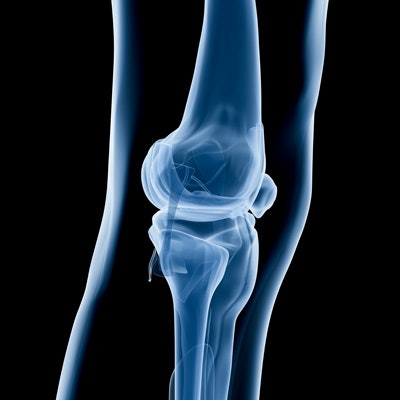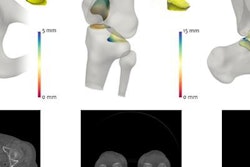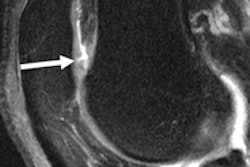
Despite the power of MRI, x-ray is still the best tool for screening patients ages 40 years and older who have knee pain, according to a new study in the September issue of the Journal of the American Academy of Orthopaedic Surgeons.
Use of knee MRI is growing due to the modality's sensitivity in detecting intra-articular pathology, and it can help orthopedic physicians diagnose torn knee ligaments and cartilage, as well as other problems. However, x-ray is often the best tool for screening, thanks to its low cost and ease of use (JAAOS, Vol. 24:9, pp. 653-659).
For example, whether a patient will need surgery for knee problems depends on how much arthritis he or she has. If an x-ray is positive for arthritis, findings on an MRI scan -- such as a meniscus tear -- are not as important because the amount of arthritis frequently dictates the type of treatment the patient receives.
The JAAOS study included 599 patients with knee pain who were at least 40 years old. The researchers found the following:
- MRI was used before referral to an orthopedic physician in 130 patients, or 22%.
- Of these patients, MRI did not contribute to treatment in 48% of cases
- Of these patients, x-ray was obtained for 58% before MRI, while only 13% had weight-bearing x-ray exams.
- 17% had weight-bearing radiographs that showed a more than 50% loss of joint space.
- In these patients, MRI was considered unnecessary in 95% of cases.
Patients should undergo an x-ray exam in the standing position prior to receiving an MRI if they have knee pain and are at least 40 years old, according to orthopedic surgeon and lead study author Dr. Muyibat Adelani of Washington University. In cases of suspected arthritis, weight-bearing x-rays are frequently enough for orthopedic physicians to develop a diagnosis and treatment plan.
What's more, a well-timed consultation with an orthopedic surgeon can be more cost-effective than getting an MRI scan first.
"Patients should always get weight-bearing x-rays before getting an MRI because MRIs are not always needed to diagnose knee problems," Adelani said.



.fFmgij6Hin.png?auto=compress%2Cformat&fit=crop&h=100&q=70&w=100)




.fFmgij6Hin.png?auto=compress%2Cformat&fit=crop&h=167&q=70&w=250)











